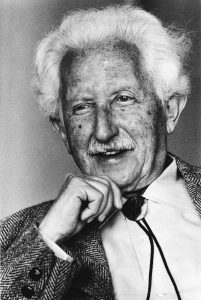
The things they do look awful c-c-cold. I hope I die before I get old.
Peter Townsend (1965)
This article is a brief overview of some of the ways aging interacts with being kinky. Such a summary calls for two caveats up front:
Kink is a subculture, and not just one community, but many small ones. That means that many of the strengths and problems of the general culture infiltrate kink subcultures. Social problems and prejudices from the general society do not stop at the dungeon door. Communities vary, and not all dungeons are the same.

Kink is not a panacea, and where kink communities and values are potential resources, it can still be quite challenging to find and use them. Your experiences may vary from examples cited here. Just as I cannot promise that if you just want it badly enough, you can become a Cirque du Soleil acrobat, I can pretty much guarantee that you cannot do so without intention and dedication. Anecdotes presented here are not intended to norm kinky sexual experiences but to alert you to what might be possible when you set your goals. When participation in the world of kink does provide skills and advantages in dealing with the challenges of maintaining sexual satisfaction as aging advances, I do not mean to imply that the communities of alternate sexuality are the only places that such advantages can be attained.
Aging:
The model of aging implicit in this essay derives from Erik Erikson. Childhood and Society (1950) is great for further reading, although it is not about elder adjustment per se. Erikson transformed Freud’s developmental theory – think; oral, anal, phallic, and Oedipal phases — which was originally a biological theory of development, into a social theory, and then expanded it to cover the entire lifespan. For a more practical and less theoretical reading, I would also suggest Joan Price’s Naked at Our Age (2011) for a non-kinky discussion of sex and aging.

Erikson’s model of adjustment outlines development at different life stages as a kind of socio-emotional obstacle course. In infancy we negotiate attachment and the formation of identity and psychological differentiation from our parents. In young adulthood we separate from parents and search for intimacy with age mates. In adulthood, we tackle problems of generativity, mostly making a family, building communities and defining our work. In old age we seek to retain the satisfactions of relationships and accomplishments in the face of aging, illness and loss.
It is only reasonable to expect that how good sex is defined would be changed by these developmental transitions as the context of some of our sexual activity changes with them. Important implications of Erikson’s model are that we are vulnerable to the unfinished developmental business at earlier stages coming up again every time we face a new developmental challenge. And, like an obstacle course, just because you handle one developmental stage with facility, the next poses new challenges that require different strategies and emotional skills to navigate effectively. Applied to sexuality, having a great sex life in young adulthood does not necessarily predict that sex will be great in middle age or old age. Unresolved issues from adolescence may come up again as one transitions to old age, but the opportunity is also there to handle these developmental old and new tasks more effectively.
In the general society, we tend not to think of sex and aging in this context. Youth is idealized, porn and entertainment are filled with hard, young healthy and vigorous bodies, and our attention is rivetted by the representations of sexuality in the prime ages of mate-finding and reproduction. This is highly dysfunctional as the stability of our long-term sexual relationships has been going down, and people have not only sexual desires, but mate finding needs throughout the adolescent and adult portions of the lifespan. Marriage is getting postponed, couples are having fewer children, and alternative sexual and relationship lifestyles are reframing traditional relationship expectations faster than our media representations about what makes sex and relationships satisfying.

Peggy Kleinpaltz and Dana Ménard have described exactly this in their work on how different people at different ages describe optimal sexual experiences. When you are 16-21, optimal sex might mean getting any partnered sexual experiences at all! By their fifties, most people have come to terms with optimal sex as building the kind of family they desire. At menopause, optimal sexual experiences must overcome hormonal changes, and as one encounters illnesses and disabilities associated with aging, optimal experience is framed by those. Kleinplatz and Ménard’s data strongly show that when you interview a sample of older people with longer histories of sexual experience, the descriptions of what constitutes a peak sexual experience gets reframed as we age, and is much more multidimensional than just achieving conception, or having a powerful orgasm. Here are the main characteristics of optimal sex experiences described by their research subjects:
Being present, focused and embodied.
Feeling connection, alignment, being in synch.
Experiencing intense sexual and erotic intimacy.
Enjoying extraordinary communication, heightened empathy.
Feeling authentic, being genuine, uninhibited, transparent.
Feeling transcendence, bliss, peace, transformation or healing.
Feelings of exploration, interpersonal risk taking, or fun.
Being vulnerable and experiencing surrender
Less often mentioned factors included intense sensation and orgasm; or feelings of lust, desire, or sexual attraction. The emphasis in these adjectives on connection, transcendence, communication and intimacy does sound a very great deal different than sexual utilitarianism, and like the opposite of isolation, alienation and loneliness that surround death, partner, and relationship loss that are commonly encountered in age. Encouragingly, Kleinpaltz and Ménard’s descriptions also sound like the kinds of sexual experiences sought by altsex participants, although people hope from these kinds of experiences through conventional sexuality, too. Their work suggests that it might be productive to look at the experiences of the altsex communities for insights about how we might retain the satisfactions of sexuality in the face of the problems of aging.

The NHSLS: Ageism in the first representative sample study of the U. S.:
Political polling was invented by Karl Marx in the mid-19th century. A hundred years later, Kinsey appropriated the techniques of political surveys to investigate mid-century American sexual behavior. Kinsey’s results were a revelation, but the lack of sampling methods and available computer technology prevented Kinsey from collecting data on a representative sample of Americans. Because Kinsey asked his volunteers to nominate other participants to his survey, critics claimed that Kinsey overestimated sexual variability. In the 1980s, America was hit by the AIDs crisis, and public health officials and social scientists demanded that the US government authorize money to investigate its relationship to American sexual behaviors. Eventually Ed Laumann, John Gagnon, Robert Michael and Stuart Michaels (Laumann et al) at North American Opinion Research Center received a grant to conduct the first methodologically exacting profile of American sexual behavior. They published two books and a many scholarly articles from that data set. I have often referred to The Social Organization of Sexuality (1994) in other posts on this blog. This book summarizes their results of the National Health and social Life Survey.
What I have not previously said is that with respect to sex and aging, this study was very much a casualty of the same social prejudices that make dealing with sex and aging difficult in the general society. Faced with limited funding, the authors were forced to decide what to cut. Rather than sacrifice methodological rigor that would protect the generalizability of their findings, they decided to cut the age range instead, closing the sample at 60 years of age! So the first study of American sexual behavior fails to apply to anyone over 60 years of age, about 15% of the US population!
But the findings Laumann et al did discover showed a stark drop off of sexual behavior after age 50. For example, men between 55 and 59 had no sex at all (15%) or only a few times in the past year (25%), and women between 55 and 59, had no sex at all (25%) or only a few times a year (40%). These compared with 7% and 15% respectively for men half their age and 4% and 10% for women for women added 25-29. The takeaway from there data: While Aging may well increase you ability to appreciate good sex, you will face an implicit social taboo against talking about aging related sex problems just as you are likely to start encountering them.
The Sexual Risks of Aging:
Aging threatens sexual health and satisfaction in several ways. Some of the bigger risks include demographics, relationship loss, partner loss, illnesses and disabilities, menopause and the decline of fecundity for women, and social expectations about sexuality.
Demographics are a special problem for women because women on the average live longer than men. A US male born in 2018 could expect to live until 77, a girl until 81.
Partner and relationship losses threaten everyone; by living longer, women are especially threatened. Economic and biological factors privilege older men relative to women. Social preferences for men to marry younger women also aggravates aging risks for women. Men’s fecundity falls off much more gradually than women’s allowing healthy men to conceive until late in life.
Illnesses and disabling losses are more common as age increases, and the principle lethal diseases often have sexually disabling consequences even when they are not fatal. Heart disease, cancers, diabetes anxiety, depression often have adverse sexual effects as do the medicines and procedures to treat them. As medical, nutritional and lifestyle advances increase lifespan, the percentage of people who live their entire lifespan free of illnesses that adversely impact sexuality decreases. This has the effect of creating great variability in how individuals are affected sexually by aging, and allows the normalization of the social ideal that we mostly live our entire lifespan healthy. This in turn contributes to the stigmatization and isolation of people when their health is impacted by illness and makes conversation about it more difficult.
This also creates opportunities for kinky people that the general public are less likely to have. To admit and act upon one’s kinky desires requires the practitioner to confront their kinkiness and creates experience fighting stigma. Deciding that one’s sex life is important enough to do that motivates one to fight to preserve it when it is threatened with aging and health challenges. Having a community of friends with whom one discusses such intimacies is a potentially valuable resource when one becomes ill. Some of the barriers to discussiong sexuality are already overcome. The diversity of kinks and highly specific needs of kinksters in the universe of potential turn ons is great practice for the kinds of open and intimate communication that are often needed to readjust one’s sexual script in the face of disruptive illnesses, disabilities and the challenges associated with medical procedures.
Elizabeth Anne Wood just published a book about her mother, who, after a frustrating and sexually limited marriage, became a Domme after her husband died. The skills her mother learned dominating men proved essentially when she suffered complex kidney cancer and had to tolerate her own discomfort, accept the bodily intrusion of invasive medical procedures, and had to communicate her strong feelings in the face of the uncomfortable adjustments that the cancer entailed. For more about her story, see Bound: A Daughter, a Domme, and an End-of-Life Story (2019).
Kink Aging Challenges:
Generational issues divide the kink community:
Because of the rapid pace of social and technological change, there are significant divides within the kink communities. People who came of age when kink was an underground and outlaw motorcycle culture have very different experiences than people who had the support of above ground social organizations like Till Eulenspiegel society and Society of Janus or the steady drumbeat of Safe Sane and Consensual educational programs. These people had very different early experiences in social kink from those who have come since the popular 50 Shades books and movies in the era of Fetlife, Tinder and Grindr.
Although kink provides opportunities to get around stereotypical age barriers prevalent in the general society through age-based role play like diaper fetishism, littles, daddy and mommy play, and role playing generally, many of the social barriers of the larger society still have considerable power in the kink communities. Most kink communities are strict about anyone under the age of 18, and education about kink for those under 18 years of age is not strongly supported by the social groups who are eager to signal to outsiders that kink isn’t corrupting minors. And tension exists between younger participants and older ones has resulted in dedicated TNG (the Next Generation) events where younger kinksters can exclude older ones. MKIBTYK, endless debates over ‘real’ Old Guard practices, and the decline of Leathersex meeting spaces are fallout from the differing needs and social pressures on kinksters of differing ages. Efforts like San Francisco’s recently closed Center for Sex and Culture and The Leather Archives and Museum in Chicago are potential sources of continuity by helping young kinky folk learn of kink history.

Intense relationships are difficult to grieve or replace.
Serious long term kinky relationships are intense and irreplaceable. It has been a long and important part of kink culture that the loss of such relationships is extremely difficult. Whether this is true relative to non-kinky straight or gay relationships is not based upon science, but is understandably difficult because kinks are many, often highly specific, and long-term kinky relationships are singular lifetime events. For people in such relationship who are well integrated into kinky communities, those communities can be rich sources of support. Loss intolerance is a thing in the kink communities – people who have the resolve not lose what they sexually desire in the face of social stigma might be expected to be intolerant of other losses too — and this can complicate grieving which is challenging for everyone, kinky and straight alike. But there is also suspicion, but no proof, that the intense physiological reactions of heavy paly increase intimacy and the intensity of loss. Even if you have a community to grieve with and support you, such losses can be very painful.
Conventional assumptions about aging are not supportive of kink;
Porn and media depictions of kink are relentless in their emphasis on beauty, large penises, fancy toys, haute couture costumes and other traditional expression of glamour. While kink can be very glamorous, aging is rarely so depicted. So aging kinksters need to make their own new realities pretty much the same way that disabled people need to fight generic ableist assumptions. Staying kinky in the face of the inescapable effects of aging takes persistently swimming upstream against social assumptions. That can be heavy going sometimes, and some kink communities are more ready to offer this kind of support than others
.
Abelism exists in the kink communities and in society: Abelism itself is an issue for kinky folk. Assumptions of fragility militate against accepting the rough aspects of play. Kink is often more complex and theatrical than conventional sexualities, and seen or unseen barriers can limit access to the experiences you want. Overcoming disabilities in order to play takes effort,and can badly crimp your play style if favored activities become available. Sexual scripts can be had=rd to readjust, so finding new satisfactions can be challenging. And kink play spaces are prone to ableist assumptions as the general society, with clubs reluctant to pay the full costs of accessible space when they could be spending the money on better dungeon furniture.
Medical practitioners are largely clueless about the implications of your diagnosis on your sex life:

In 2016, Sprott and Randall conducted the National Kink Health Survey. They discovered that 14% of their self-selected sample had ever had a kink related health problem, and nearly 70% had never spoken about their kinks to a health provider. These results are a great source of concern given that many kinky activities are strenuous, some are risky, and many health conditions have implications for the safety and opportunity to do kinky behaviors. Furthermore, the aforementioned extreme diversity and variability of kinky behaviors, the fact that they are stigmatized, and are under-reported by the general population means that health practitioners cannot be assumed to know or spontaneously discuss the health implications of medical diagnoses and treatments absent specific knowledge of a client’s kinks. The 2006 Kink Health Survey suggests that doctors are clueless about kink because kinky people don’t tell them.
But kinky people aren’t just being irrational to conceal their kinks. Some are fearful that evidence of kink will trigger mandatory reporting of abuse and that doctors will make unwanted and incorrect conclusions confabulating kink with intimate partner violence. Some just do not want to face the embarrassment of possible negative social judgments. Others fear creating a compromising medical record as current HIPPA regulations may move heaven and earth to prevent complete strangers from knowing about your health data, but medical centers, other physicians and insurers cannot be prevented access. In many instances, you have no real power to ensure that your medical record is accurate, and you cannot change a doctor’s incorrect or adverse medical judgment in your record.
Furthermore, medical personnel in many settings do not get any training at all about what kink is or is not, let alone the health implications of the diversity of kink practices. Telling your doctor is very likely to require a lengthy and intimate conversation about your practices if it is to have much chance of improving the quality of your care. Unfortunately, this becomes even more true as one deals with specialists who, even if they are fresh out of medical school and have the very best in modern training, are facing exacting instruction in the details of their specialty, not kinks they had never expected to encounter.
A personal story here: despite having a capacity for self-assertion on a par with Genghis Khan, considerable facility with medical language, and cloaked with all the white male privilege an upper middle class overeducated person could expect, it took me five direct requests to extract from my prostate oncologist his expectation that I would have no prostate sensation two or more years after beam radiation treatment for my prostate cancer. This happened at one of the top 20 cancer centers in the country. Your experience may vary, but even treating a very prevalent cancer that affects lots of gay men, my specialist, who was otherwise excellent, was just not used to being asked and answering this basic question that applies equally to heterosexual males who enjoy prostate play as it does to many gay bottoms.
Because medical problems accrue with age, an implication of this unsatisfactory state of affairs is that it behooves kinky people to: 1) Have and maintain an open relationship with their primary care physician. This is the equivalent of digging your well as best you can before you’re thirsty. The emotional stress of a sudden diagnosis can be an especially awkward time to broach sensitive material you have heretofore been reluctant to disclose. It can be a huge help to have a sophisticated primary care physician helping you identify a suitable specialist if you suddenly need one later. It is also not so bad to have such a person to refer to if these kinds of misadventures happen to your kinky friends. 2). Set aside any resentment about needing to educate your specialist about your kinks if you suspect they have implications for your care. 3). Weigh carefully the risk/rewards of opening up about your kinks in closed or judgmental communities. 4). Have a conversation with your physician about what you can and cannot keep out of your medical record to maximize you informed consent about what risks you might face in disclosing your kinks to your physician before you actually discuss them.
The National Coalition for Sexual Freedom NCSFreedom.org maintains a list of Kink-Aware Professionals that includes physicians. There are not nearly enough of these to serve the entire out kinky population, and they tend to be in urban areas and the coasts are much better represented than the heartlands. It is dishearteningly light on specialists. http://ncsfreedom.org/key-programs/kink-aware-professionals-59776
Try as you might, even the best management cannot prevent aging and health effects from interfering with you sex life. But some aspects of kinky life are good training for dealing with them.
Part of dealing with aging involves facing loss. Given the ravages of the HIV/AIDs crisis on this community in the 1980s and 1990s, many kinky communities have painful histories of loss, and continuing programs for assisting stricken members. Support for such losses does not always mean overcoming them, sometimes it requires acceptance. But it is reasonable to ask yourself what social action feels appropriate when you face aging losses or disabilities that you cannot overcome, but that you still seek to oppose. Elephant in the Hot Tub: Kink in Context is itself an example of such a project.
Another potential response to the challenges of aging is consensual non-monogamy. Although a great deal of ink has been spilled about the erotic and relationship characteristics of CNM, many polycules use it as a response to the complex logistical requirements of caregiving. If aging increases the burdens on caregivers, CNM can be part of the solutions to the emotional labor of responding to grief and the logistical challenges of illness and disabilities.
As Elizabeth Wood’s book implies. Kink requires boundary setting and confronting body image issues. Sprott and Randall found that 36% of their respondents in the 2016 Kink health Study met the medical criteria for obesity, so maintaining a positive body image in the face of conventional sexual idealism is a challenge many kinksters have confronted. The acceptance many communities practice is also good training for the violations, insults and disappointments of aging effects. Living with a port, giving oneself daily injections, facing the discomforts of painful rehab, all are made easier by practice tolerating discomforts that are routine aspects of kinky sex play even if medical play was never your kink. Often, success in medical treatment is a matter of perseverance and compliance. In so far as kink trains these skills, they are useful many other places. A corollary danger however is that some activities that were romantically sexualized can lose their luster when they become the quotidian essentials of daily care. I have known people whose terror of needles extinguished under the routine necessity of daily injections. If that terror was also an erotic thrill, then newfound equanimity may also feel like a loss.
Consent training in the kink community is actually pretty good training for medical consent. Loathe as some psychotherapists may be to admit it, the standards of continuous informed consent in kinky relationships are very similar to those in medical care. Ultimately, you are likely to be the one who is in charge of your care, and the standard of personal responsibility that prevails in kink is a good approximation of that which prevails in the medical community.

Old age is not for sissies
Bette Davis
Being older and being disabled are stigmatized in the general society, and it is unreasonable to expect participation in kinky life to ease all the burdens. And yes, sissies get old, too. But aging also promises perspective that can broaden sexual pleasure, and community can help to cope with those losses that even good sex cannot entirely avoid. A good sex life and participation are not a substitute for the need to change ageist social attitudes and structural discrimination. But they can make your personal journey and those others whom you love more meaningful.
Copyright August 2019, Russell J Stambaugh, PhD, Ann Arbor, MI
Original Source: https://elephantinthehottub.com/2019/08/kink-sex-and-aging